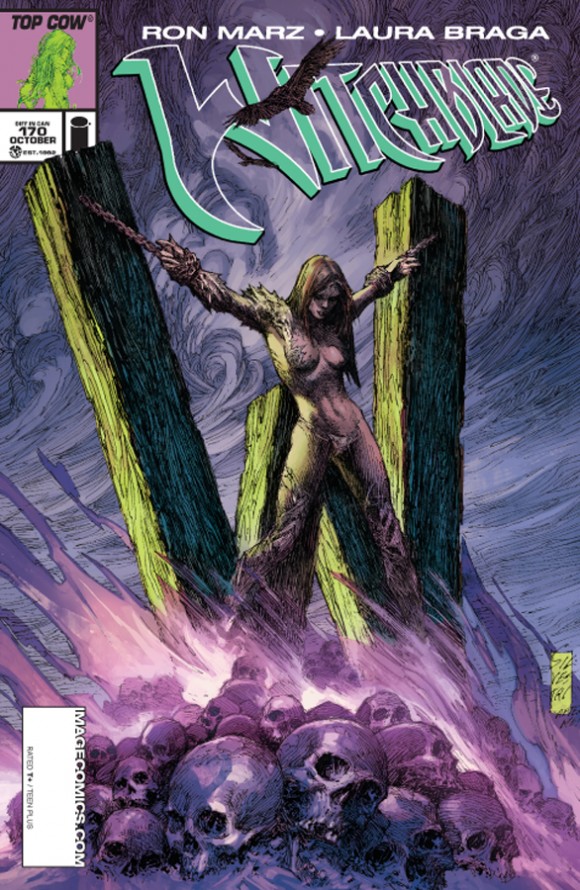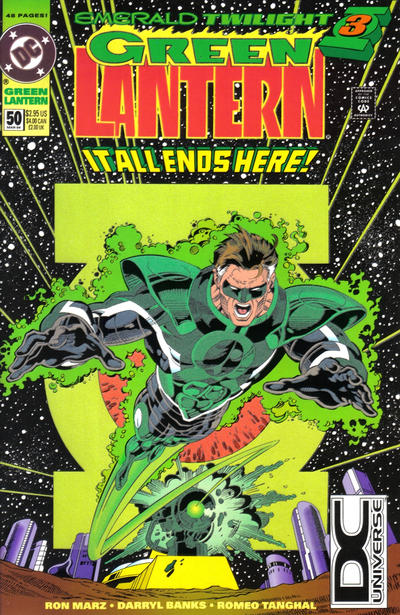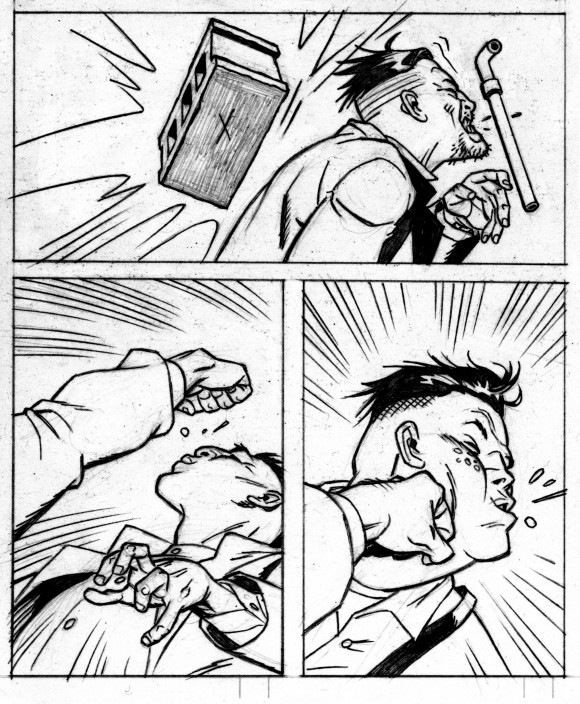Writer Ron Marz has been in this gig for close to 25 years, with a wide array of accomplishments to show for it. He’s hard at work on a number of projects right now, including stories for Edgar Rice Burroughs. Here, we talk about his projects past — including a famed run on Green Lantern — present and future.
How’d you get into this racket and what are you working on now?
RM: It’s all Jim Starlin’s fault. Jim and I were friends before I broke into comics. I was working as a journalist, and Jim’s the one who suggested I give comics a try. So he showed me the ropes, and got me my first few gigs at Marvel. That was 1990, and I’ve been writing comics ever since.
At the moment, I’m writing “Witchblade” monthly, working on the “Ravine” graphic novel series with Stjepan Sejic, and we should get my creator-owned book, “Shinku,” with Lee Moder, going again this year. I’m also writing a book called “The Protectors” for AthletaComics, which is the comic company started by NFL player Israel Idonije. The Protectors is Izzy’s concept, and Bart Sears and I are working with him to bring it to life. That series will release in 2014.
Other odds and ends include an “Adventures of Superman” arc with Doc Shaner for DC Comics, and weekly strips for the Edgar Rice Burroughs website of “The Mucker” with Lee Moder and “Korak” with Bart Sears. I’ve also got three or four other 2014 projects that haven’t been announced yet.
You have a fairly eclectic career: From the cosmic Green Lantern to the pulp work you’re doing now. What do you consider the highlight of your career to date?
I think most creators end up loving their creator-owned work best. So for me, that includes things like “Shinku” from Image, “Dragon Prince” from Top Cow and “Samurai: Heaven and Earth” from Dark Horse. I’ve really enjoyed the vast majority of everything I’ve worked on, from “Silver Surfer” to “Green Lantern” to “Star Wars.” But the things I’ve created from the ground up are the ones I hold most dear.
On the flip side, what work of yours would you rather nobody ever see again?
Certainly, my run on “Thor” didn’t turn out quite like I wanted it to. That’s one of my favorite characters and mythologies, and I don’t feel like I did it justice. But even so, I look back at those issues and find some things I like. Both my “Thor” and my “Silver Surfer” runs were learning experiences. I was figuring out how to do this job while I was writing monthly comics for Marvel, which I realize is a rare opportunity.
Let’s talk a little about Green Lantern. Everybody knows that nothing in comics lasts forever. But what goes on in your mind as a writer, working on something like “Emerald Twilight,” which had vast, serious consequences for the DC Universe?
You know, when that assignment was handed to me, we had to hit the ground running because the book was already behind schedule. So I didn’t really have time to think about the consequences, I just had to roll up my sleeves and get to work. That’s why the three “Emerald Twilight” issues were drawn by three different artists. They were all worked on at the same time. I still feel like the fact that we were on such a tight schedule was ultimately a good thing. We didn’t have time to wring our hands and endlessly second-guess ourselves.
Following up, you set up a story that’s hard to reverse and then it indeed was reversed, in a manner of speaking. What’s that like as a creator? Fans go bananas. What about you?
Everything in superhero comics is temporary. Or maybe a better way to say it is everything in superhero comics is cyclical. I don’t think you as a creator can get too caught up in what happens on a title after you leave it. We borrow somebody else’s toys for a while and play with them. Creators are ultimately caretakers for these corporate-owned characters. The best you can hope for is to tell stories you’re proud of, and leave your mark in some way.
Tell me some of your influences. What are some of your favorite creators, historically speaking?
Strictly within comics, I’m probably most influenced by Jim Starlin, Alan Moore, Frank Miller, Walter Simonson and of course, Jack Kirby. I think in a lot of ways, Kirby casts the longest shadow, because he influenced everybody who influenced me. Outside of comics, people like Dickens, Tolkien, Edgar Rice Burroughs, Robert E. Howard and Stephen King were big influences.
What was your first comic? Do you still have it?
I honestly don’t know. My first exposure to comics was a box of Silver Age Marvel issues that belonged to my older brother. It was stuff like classic Spider-Man, Avengers and Fantastic Four. I probably couldn’t even read when I discovered those, but the artwork made a vast impression on me. There was a sense of wonder in those pages.
What’s the best thing about the comics industry right now?
I think the industry as a whole is more open than ever to telling different kinds of stories. The superhero stranglehold on the industry is diminishing little by little, which I think is a necessity for comics to reach as wide an audience as possible. Superheroes are great, but not everybody is going to read superhero comics. We should be telling a multitude of stories in a multitude of genres, just like film, just like prose, just like television. We’re heading in that direction.
What’s the worst thing?
I think there’s less creative freedom when working on corporate characters now than there has been in the past. And I wouldn’t even say it’s the “worst” thing, it’s just a different paradigm. In a lot of ways, it’s understandable, because a lot of the characters have transformed from mere comic properties into billion-dollar, multi-media franchises. The more money at stake, the more control is going to be exerted. The doesn’t mean the job isn’t still fun, it just means you’re more likely to be telling an editorially driven story than your story. It’s about working within parameters, which is part of the job.
What’s the one comics character you’ve always wanted to write but never got the chance?
I’ve been lucky enough to have written most of the Marvel and DC characters in some form or another, thanks to guest appearances and crossovers. But if we’re talking about a character I’ve never written for even a panel, I guess I’d have to say John Carter of Mars. Obviously John Carter is not specifically a comics character, but there’s certainly a comics tradition for him, as well as an even richer tradition for Tarzan. Both of those characters were hugely important to 11-year-old me, and I think to some extent, creating comics is about catering to your inner 11-year-old.





January 2, 2014
13th Dimension is killing it! All of these interviews/insights are right up my alley!
January 2, 2014
Thanks, Reggie! We aim to please and enlighten!